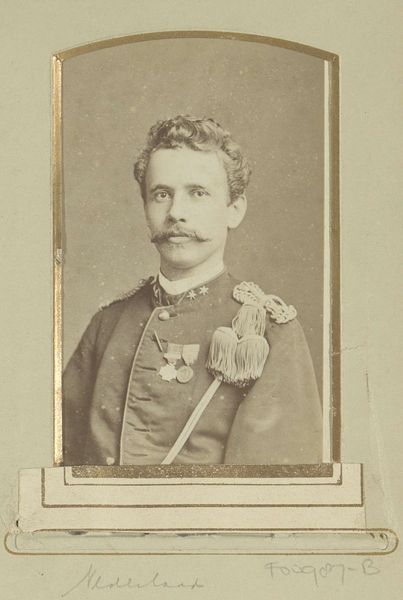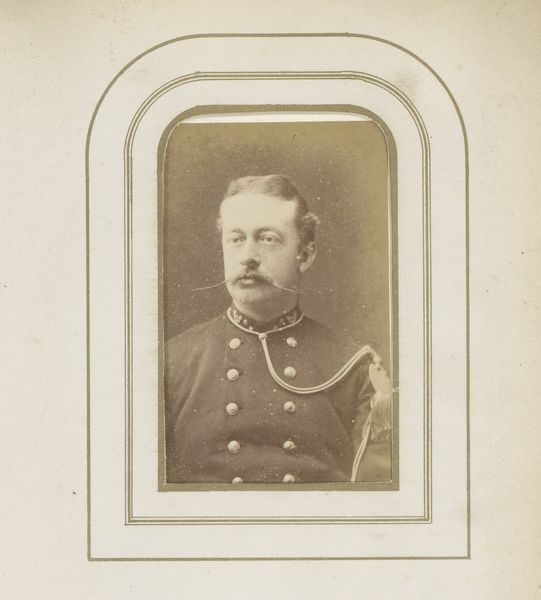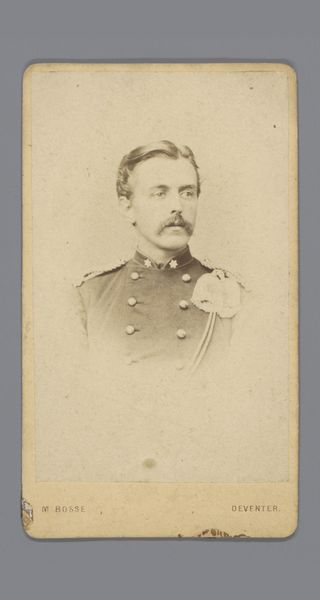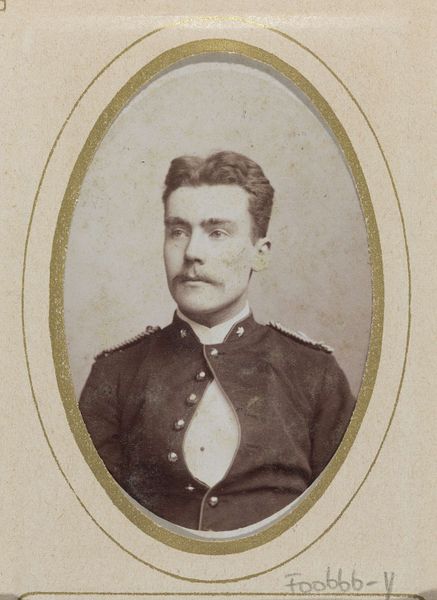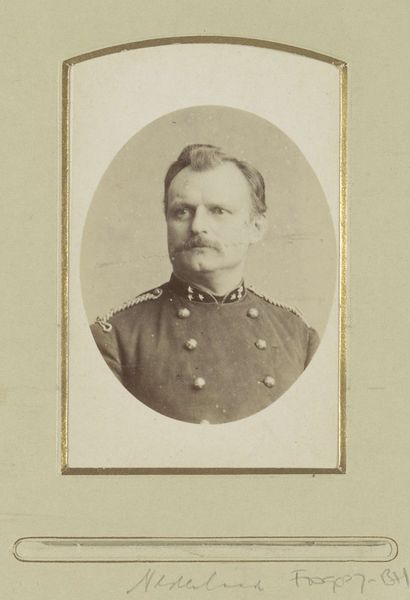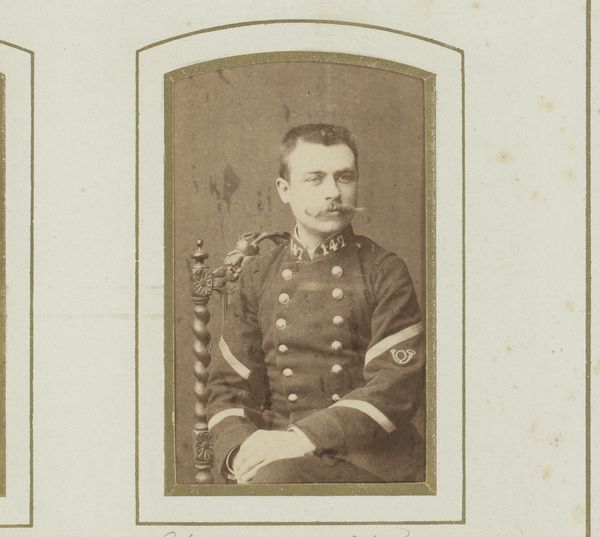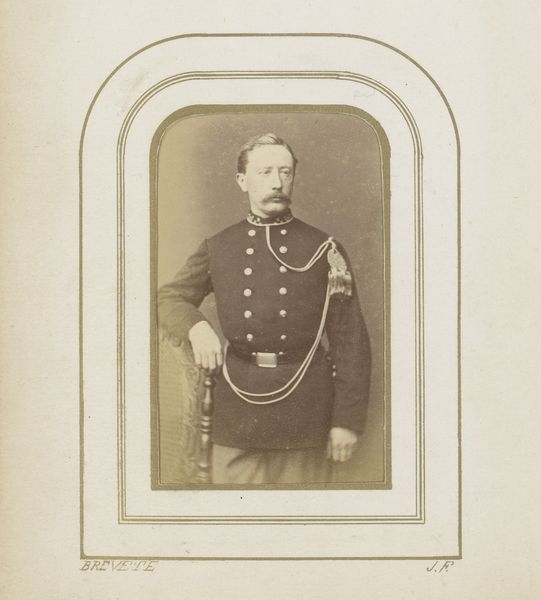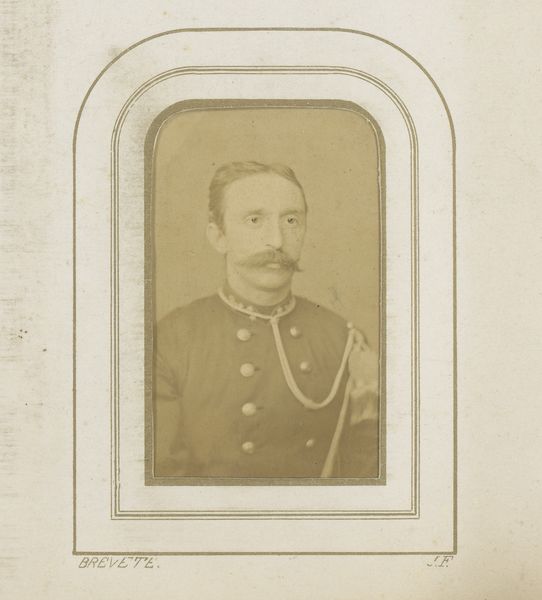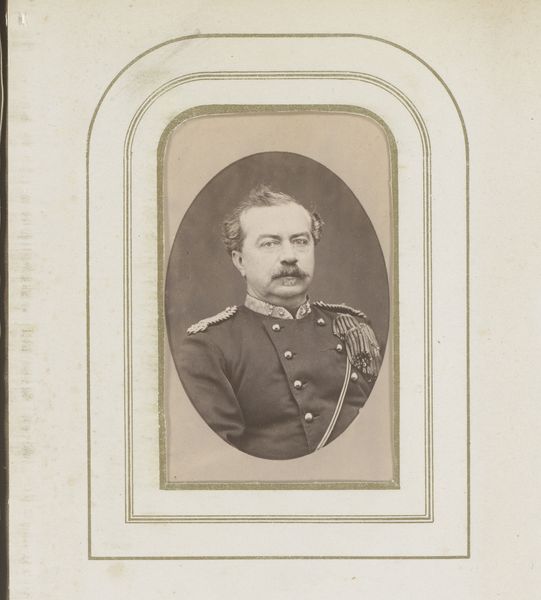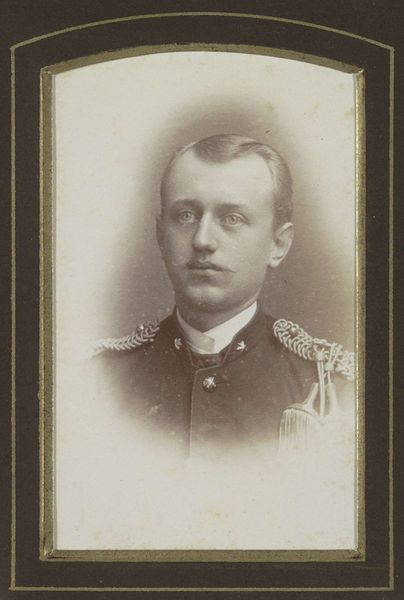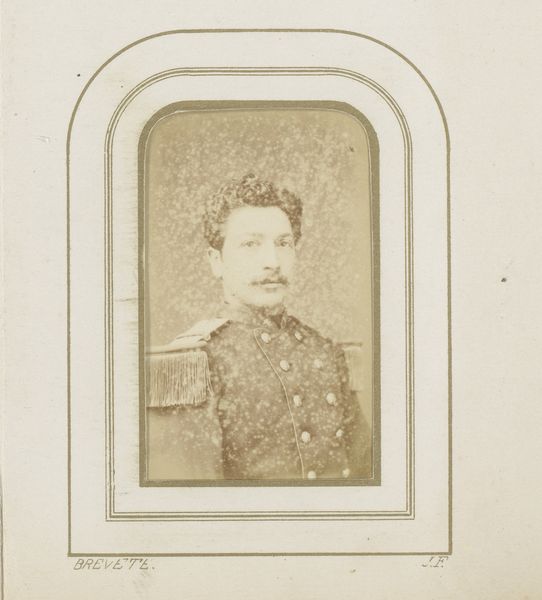
daguerreotype, photography
#
portrait
#
daguerreotype
#
caricature
#
photography
#
historical photography
Dimensions: height 85 mm, width 53 mm
Copyright: Rijks Museum: Open Domain
Curator: The formality is palpable, isn't it? He seems to emanate authority, yet there’s a melancholic stillness in his gaze. Editor: Precisely. The weight of his uniform seems symbolic, doesn’t it? This is "Portret van een (vermoedelijk) Nederlandse militair," or Portrait of a (Presumably) Dutch Military Man, created between 1875 and 1881. The photographic medium itself— a daguerreotype, offers a fascinating insight into the period. Curator: And the ornate detailing! The tassels, buttons, even the framed setting around the image - they signify status, ambition. The photographic processes here speaks to the larger narrative about 19th century cultural identity, gender roles, power, class. We are forced to confront questions of historical trauma, gender inequality, political control and cultural memory. Editor: Indeed. Observe how his serious, perhaps strained expression, contrasts with the romantic, flowing hair. This dichotomy may symbolize inner conflict within the structures of military service itself— duty versus personal desire. In photographic terms, his face becomes a map marked by time, conveying lived experience beyond conventional symbolism. This is a face from the past speaking to us today. Curator: This era wrestled deeply with defining masculine roles, embedding them within specific codes and practices. His attire reflects both state power and bourgeois refinement: aspects intricately linked to the imperial agenda across Europe. This isn’t simply one man's face – it is evidence within broader dialogues surrounding the era. Editor: Such points help us contemplate our modern relationship to power structures. But it's important to acknowledge art is interpreted uniquely through differing psychological experiences. Visual symbols, such as those conveyed by his appearance, remain influential. The way an image captures emotions, shapes our understandings across different contexts over the long history. Curator: Absolutely, which speaks profoundly to the endurance of power’s image through both aesthetics and ideology across generations! Editor: Consider how historical portrayals enable new understandings to occur and contribute to continuous historical conversations!
Comments
No comments
Be the first to comment and join the conversation on the ultimate creative platform.
